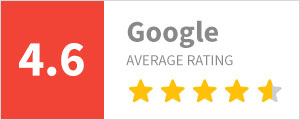What are the hidden costs for Dental Loupes based on the list of requirements?

Clinical dental loupes are initially designed to help visually impaired people read the fine print. At that time, surgeons started to use loupes for their microsurgical procedures. Later, in the early 1980s, dental professionals started using loupe for their practice. Today, loupes have become an essential instrument in the field of dentistry.
The main objective of using dental loupes was to visualize better, and then loupes were promoted to help users work with an improved posture. Unfortunately, many loupes used by clinicians today still force them to tilt their heads excessively, creating chronic neck pain or injury. Using poor ergonomic loupes will lead to the cause of neck pain among dentists and surgeons.
Why is there a need for Ultimate loupes?
These provide the highest optical quality available today. High graded dental loupes are loupes that possess the passage of light lengthened through a series of internal reflections via a Schmidt prism, thus allowing the barrel of the loupe to be shortened sufficiently for spectacle or headband mounting.
These loupes provide improved quality of magnification, more expansive fields of view, and greater depth of field. The disadvantages are that they are heavier, have long barrels, and are costlier. They can be used for all magnification levels as they are also useful as dental loupes for students.
Many students may purchase their first dental loupes based on prices, claims (often not valid) made by sales reps, frame color, or the latest style. However, high hidden costs, such as medical treatment of pain or injuries developed due to non-ergonomic loupes, will lead to loss of working hours, early retirement, and the cost of updating prescriptions. Also, there are many issues related to improperly assembled loupes, including misalignments of optics, poor fitting, eyelashes touching optics, etc. These conditions will help clinicians make wise decisions while purchasing their loupes.
Requirements of Ultimate Loupes and hidden cost
The basic requirements of ultimate loupes are identified and are divided into three categories: vision, ergonomics, and other requirements.
-
Vision Related Requirements
For vision-related requirements, the minimum magnification should be less than 15 inches which was the average working distance of dental workers in the past 2.5 years. Dentists have started to work more upright with better ergonomics today, so the average working distance between dentists and surgeons is longer than 15 inches. New-generation clinicians should use at least 3.0x loupes as their starting pair.
-
Broad field view
The view field through high graded dental loupes is the best as they tend to become smaller as the magnification power increases. In contrast, Prism loupes offer a larger field of view. Due to the addition of extra glass and assembly, they are more expensive than the Galilean loupes.
Hidden cost: Wider field may help, but there may be no severe hidden cost if you can see the operation site.
-
Custom working for each procedure
Dentists may stand or sit for various procedures. These dentists have multiple pairs of loupes with different working distances, although the best option is when the dentist can change the working distance on the same pair of loupes.
Hidden cost: If one pair of loupes cannot offer multiple working distances, you can purchase multiple loupes.
-
Precision and Alignment
Precision alignment of two oculars lens in the vertical direction requires sturdy frames for Through-The-Lens (TTL) loupes and stabilized ocular mounting arms for Front-Lens-Mounted (FLM) loupes.
Hidden cost: This inaccurate alignment can lead to misalignment, creating double images in the vertical direction and causing eye fatigue and headaches.
-
Accurate Measurement
Precision alignment of oculars to eyes requires accurate measurement of custom data and advanced manufacturing methods. This alignment can be tested by bringing a pencil into the magnified field. If the alignment is precise, the pencil and the image of the pencil should be aligned.
Hidden cost: The image quality improves if the direct and magnified vision is precisely aligned. If the misalignment is too significant, handling instruments may be complicated.
-
Restoration of Working Distance
Easy restoration of working distance of TTL loupes is due to the change of reading prescription, which is desirable.
Hidden cost: If users cannot restore the working distance, in this case, manufacturers should update their prescription – Updating the prescription will take several weeks but will also be prohibitive.
Hidden cost: If learning is not easy, we can invest in earning and low productivity.
Bottom line
Loupedirect has been at the forefront of loupe-and-headlight technology for decades, designing posture-safe ergonomic loupes and eye-safe natural LED headlights that help prevent or alleviate clinicians’ neck and back pain. If you want to participate in establishing requirements of ultimate loupes, you can share your views at our site.

